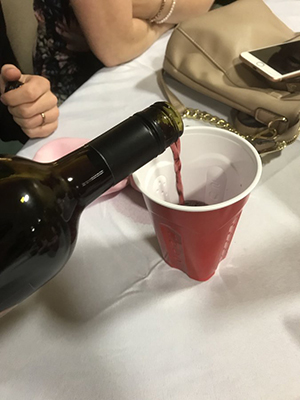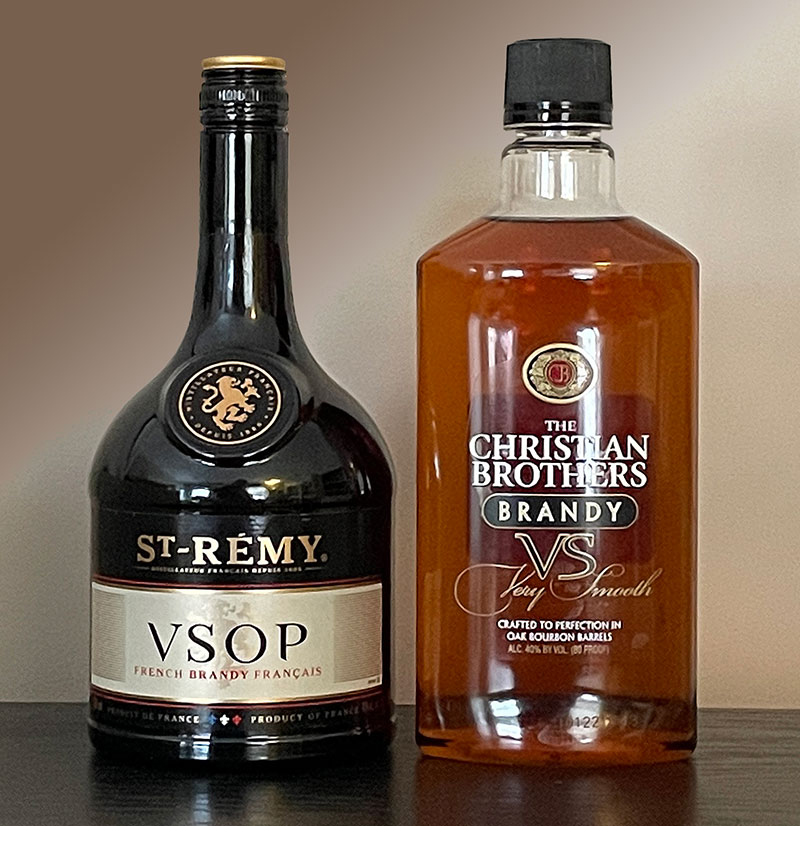 How to Read a Wine List
How to Read a Wine List
This rant is also available as a podcast episode.
When presented with a restaurant wine list, don’t be rushed or intimidated. The server will often hand you a pages-long list, but then expect you to make a selection immediately, before you have any idea what foods you’re going to pair it with. That’s a bad idea. My suggestion is to just ask for water and then that will give you time to try and figure out what your entree is going to be. Sometimes the server will still try to rush you because they are on a schedule. Just politely say, “Well, we will have some wine with dinner, but we don’t know what we’re eating. So we need some time. Once we decide on our food, then we’re going to order some wine to go with it.”
Second, of course, you might not know what kind of wine you want. And this is where you can turn to help. You can rely on that selfsame server, because a restaurant, if they do have an extensive wine list, hopefully will have trained their waitstaff on what kind of wines they have and what goes well with their foods. Sometimes this does not work and you’re on your own, but if the help is there, I suggest you use it.
Higher-end restaurants are likely to have a sommelier, which is, at its simplest, a wine specialist. If so, that is a person you really want to use, because that is a person who is a wine expert ,and they will know the restaurant’s wines, and that person should definitely be relied on.
Third, and the core of this rant, is that restaurant wine is always overpriced, and it’s been overpriced for a long time. You can discover some of these mark-ups when you’re at the table, if you dare. You can Google the wine you’re interested in, and find out what its retail price is.
Historically, the mark-up has been about 200% of retail cost. Restaurants have long been criticized for this. They’ve explained it away by saying, “Oh, well, look we have our fine glassware. We have our sommelier. We have our linens. This has to be paid for somehow, right?” Other times, the justification is, we’re not making enough on our food margins. We’ve still got to make a profit, and so wine is an easy profit center.
Both of these arguments are completely specious in my opinion, because on the one hand, yes if you have a higher-end wine service, there is glassware and linens, etc. There is cost in there. However, is that cost two or three times the price of the wine itself? I think not. And there are also BYOB (bring your own bottle) restaurants. They somehow magically manage to stay in business and turn a profit without any alcohol program at all. Now some places will kind of take a middle ground in that they will allow you to bring your own wine, but there’s a corkage fee. Now, that that can be fine. I think a reasonable corkage fee for a guy to come and pull a cork, and the glasses, and the linens, should be about $5 or $10. But I’ve seen corkage fees up at $35 to $45, which is just absurd if you ask me.
Here are some random examples of mark-ups that I discovered recently. One was for a J. Lohr Seven Oaks Cabernet Sauvignon. This is from Paso Robles in the Central Coast of California. On this wine list it was $38 (you are going to be seeing wines at the mid-thirties price point a lot, by the way). That wine sells at the winery for $17. Now that’s a 200% mark-up, and that’s what people used to do, so that one is kind of OK. I found another one: Sterling Vintner’s Cabernet, $35, but you can buy it any day of the week for $10 at Walmart. And the one that I discovered that just really irritated me was this is: an Estancia Cabernet. I’ve been drinking this wine for literally 30 years. It’s also coincidentally from Paso Robles and is widely available. I found it on a wine list for $11 a glass. I just bought this wine at my local liquor store for $6 a bottle. Remember, a bottle will yield about four glasses, so this is an effective mark-up of 700%! These are the kinds of egregious price gouging that just make me livid.
I will occasionally do a restaurant review on Yelp, and I’ve been calling restaurant owners out on this. I never get a response, but I find this to be abusive basically, and just unconscionable. I can live with a 200 to 250% mark-up, but anything more than that is simply greed as far as I’m concerned.
Restaurants tend to punish you if you’re used to enjoying wine with your meals. You go out to a restaurant and they know they’ve got you as a captive audience. You’re out on a splurge, right? If you don’t want to drink beer, cola, or water with your meal, then you’re you’re stuck with whatever prices they’re demanding on the wine list.
Here’s a tip: order mid list. The second least expensive wine on the list is often marked up the most. Why? People don’t want to appear cheap. So they order the second cheapest wine. Go one or two bottles higher for a better deal. Also, beware of common brand names, because restaurateurs know they’re always going to get a full mark-up because people know what to expect, for the quality of the wine, if not the price.
Another point is that most lists follow a graduated mark-up, with the highest mark-ups on the cheapest wines, and lower mark-ups on higher-end wines. A $10 wholesale wine may be marked up to $30, but a $50 wine might be just $80. So in a certain sense that presents a value proposition, but by the same token, how often can many of us swing $80 for a bottle of wine at dinner? So then that starts to restrict your choices too. I have to say, my wife and I often bemoan the fact that when we do go out to eat, when the bill comes, 50% of it is often the wine, which then restricts how often we feel like we can go out to eat, just because of the amount of money involved with that.
It’s been my experience that some, unfortunately not even most, restaurants do adhere to the traditional standard pricing mark-up of about 200%, and at the most 300%. Of course, if nobody adheres to it, is it a standard or not? But sadly, my experience in dining out is I’m seeing more places pushing this into the 300 to 400% mark-up range. These days, if you search long enough you may find a wine price that is merely insulting.
Last year my wife and I were in a resort town, and we went out to get a pizza at a little local joint. It’s summer and the weather is nice. Most of their seating is outside, and they had a bar outside as well. So of course, the first thing I do is walk up to the bar and order of a bottle of wine. I got a completely ordinary Italian selection since this is an unassuming pizza place. The bartender hands me the bottle and two plastic cups and says, “That’s $32,” and I thought well, alright I guess. We sat down at the outdoor tables and started drinking our completely ordinary wine, and this is the experience that really got me going on restaurant wine price gouging. I decided to look up the price of this wine. Well, it retails for $9. So you’ve got to figure the restaurant probably paid $6 for it wholesale. And of course this situation blows out the whole idea about the glassware, about the linens. It was: Here’s your bottle. Here’s your plastic cups. Hope you like it! Frankly, that experience was what really got me on this crusade, if you will, to call out overpriced wine. I’ve been aware of it in restaurants for a long time, and just silently suffered with it. But, it just seemed so egregious this time that it had to go remarked. What I said in my Yelp review of this place was hey, good pizza, they do a great job. But if you go, they have a takeout option, get your pizza to go, take it back home, and drink your wine and eat your pizza there. You’ll be much happier.
I’m frustrated because I don’t know what the solution is to this problem. It seems like the restaurant owners have all of the power in this transaction. If you’re going to get wine in a restaurant, you’re going to pay their prices. The only bright spot I see is that these days, with the prevalence of social media, people are willing to review, often extensively, a restaurant’s food, its service, its location, its cleanliness, whatever. I find it interesting that the issue of wine pricing just never seems to come up, and I don’t think that’s because people aren’t having wine with their meals. I think it’s just that people have been trained that this is just the way it is. You just have to accept this kind of pricing practice. I would like to issue a call to people: if you are into social media reviews, and if you are a casual wine drinker, and if you are irritated as hell by these pricing practices, do let the restaurant owner know through your review and call them out on this, and maybe, maybe, it’ll put the brakes on this a little bit. That would be my hope
Back to blog posts: https://winervana.com/blog/


 How to Read a Wine List
How to Read a Wine List